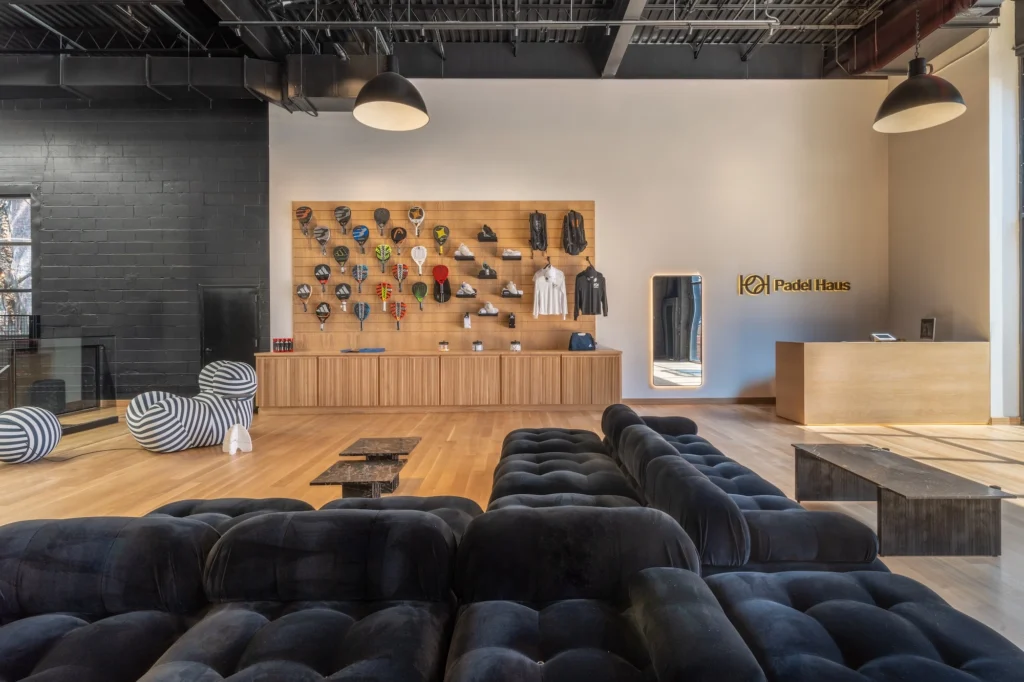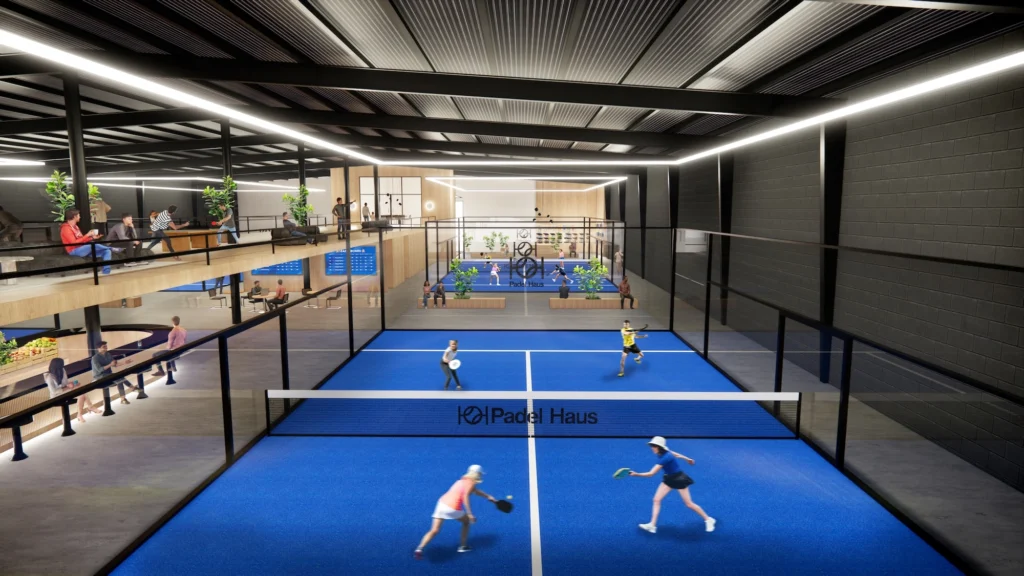
Gomez believes padel, a racket sport that takes inspiration from tennis and squash, can become the next big thing in America
Pickleball might be all the rage right now in the United States, but another racket sport could be coming for the crown.
Padel, a sport invented in Mexico in 1969, has emerged as a potential competitor to pickleball’s hegemony inside gyms and health clubs across America. Essentially a cross between tennis and squash, padel is popular in countries including Spain (where it’s the second most popular sport after soccer), Italy, Argentina, Sweden and its homeland of Mexico, among others.
Santiago Gomez is betting that padel will make it big in America, too.
A Mexico-born padel fan turned New York entrepreneur, Gomez founded Padel Haus in 2022 in Brooklyn as New York City’s first dedicated padel club. Since then, Padel Haus opened two additional clubs in Brooklyn, with new locations set for Denver, Nashville and Atlanta.
Gomez sat down with Athletech News to discuss the origins and growth padel, why the racket sport is poised for growth in the U.S. and his plans for the future of Padel Haus.
The following conversation has been lightly edited for clarity and length.
Athletech News: Can you tell us about your background and why you decided to create Padel Haus?
Santiago Gomez: I was born in Mexico and grew up between Mexico City and Acapulco, where padel was invented in 1969. I grew up with the sport in my blood – my family has been playing it for years. I started playing as a teenager and played until after I graduated college in Mexico.
I moved to New York in 2010 to work in finance – at that time there were no courts here, so I stopped paying. In 2014, I left my finance job and opened a few restaurants, which I sold in 2020 when COVID came. During COVID, I moved back to Mexico for a bit and started playing padel again every day. I’d heard they opened a first club in Miami, Wynwood Padel Club, and that it was doing quite well. That’s when I got the idea of opening a club in New York City. I came back to New York and opened our first club (in Dumbo, Brooklyn) in the summer of 2022.

ATN: How would you describe padel for people who aren’t familiar with the sport?
SG: Padel is like a mix between tennis and squash. You play on a smaller court than tennis and can use the walls, which is why it’s somewhat similar to squash. It’s doubles only, so four people on a court.
Even though it was invented in Mexico, there are now 25 million people playing padel worldwide. In places like Spain and Sweden, padel has surpassed tennis as the largest racket sport. “Padel” searches on Google are up almost 100% year-on-year for the past three or four years.
Brands are also starting to realize the value of the sport and the amount of players who are passionate about it. Brands like Adidas and Wilson, which used to be just tennis brands, now have their own padel lines. Some fashion brands like Prada and Zara have also launched their own padel lines.

ATN: Padel hasn’t historically been popular in the United States, but that’s starting to change. How would you assess padel’s growth trajectory in America?
SG: The U.S. was probably the last (large, Western) country where the sport wasn’t present, up until three or four years ago. Since then, it’s grown around 100% year-on-year in terms of players and clubs. The Pro Padel League (PPL) was just created, which I compare a lot with MLS. When soccer started in the U.S., it was kind of late to the game but everybody played it worldwide. Then MLS started growing by bringing in a lot of former top players or retired players. The PPL is somewhat doing the same.
Given its size and the amount of potential players, I think the U.S. is going to become the number one padel market in the years to come. Right now, there are about 400 courts but I think we can easily get to 5,000.
ATN: Is the rise of pickleball in America a good or bad thing for the future of padel?
SG: Pickleball, padel, tennis, ping pong, squash – any racket sport – I think they all help each other out. The world has seen a rise in racket sports as a whole, and pickleball did a great thing by converting some tennis players to try pickleball for the first time. I see the same with pickleball players trying padel for the first time. The conversion in most cases is one way, meaning people try padel and they just want to play paddle; they don’t want to go back to tennis or pickleball. We have a 92% retention rate in terms of people who come to try this sport for a second time returning for a third time.
Padel players tend to have a different profile than pickleball players. Padel players tend to be a bit younger and more athletic, whereas pickleball is mainly for people who wouldn’t play sports otherwise. Padel has more strategy involved because of the walls, and it’s a bit more (physically) challenging because you’re running more on a bigger court.

ATN: Why did you decide to launch Padel Haus in New York City to start, and how has the brand grown since 2022?
SG: New York is a fantastic market given how many expats and foreigners live here. In all of the facilities we’ve opened here, the club was full within one or two months. Initially, most of our players were international, but those people told their friends who came over and tried it for the first time. Now, the majority of our players are Americans.
As we go to new markets like Nashville, Denver and Atlanta, one thing they all have in common is that they’re wellness-first markets. A lot of people who live in Denver are outdoorsy and they want to try sports. Nashville has also gone through a transition in terms of what people like to do for social activities.

ATN: What’s the typical demographic profile(s) of a Padel Haus member?
SG: When we first opened in New York, 90% of our customers were male. Now we’re at around 65% men and 35% women. That probably has to do a lot with where we are in New York City. We don’t get a lot of stay-at-home moms but we’ll get that in other cities like Nashville and Denver.
ATN: What are your expansion goals for Padel Haus over the next few years?
SG: We want to get to 40 facilities within the next five years. We’re looking at every tier-one and tier-two city right now.
We want to be close to downtown in most of the cities that we go to, and we’re targeting cities that have at least 800,000 people and that have purchasing power to pay the rates that we ask for. I always say we have a premium facility and we have premium prices. Because of that, we stay closer to the city centers.
